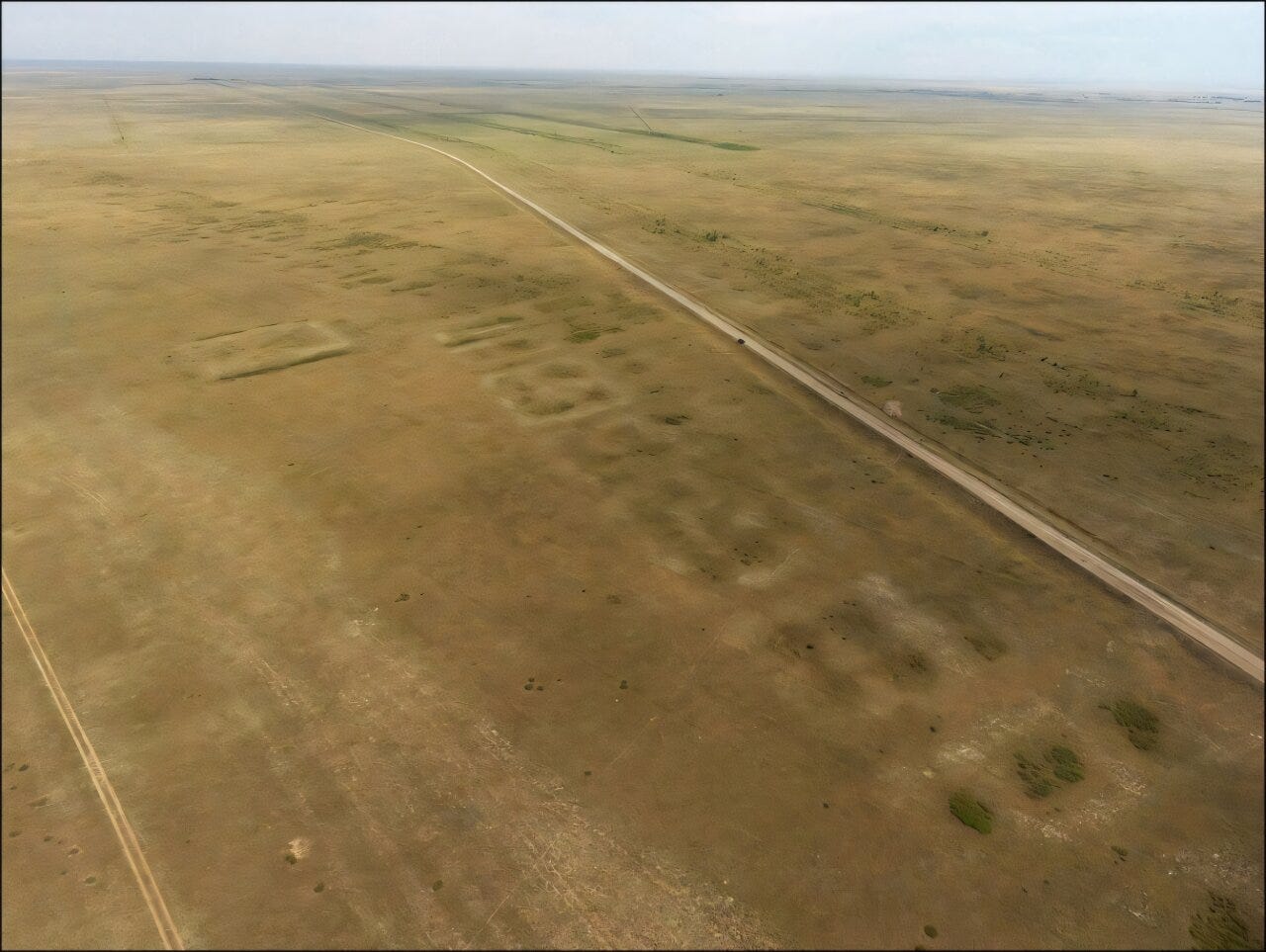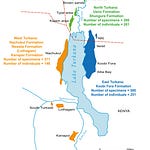A Landscape That Was Never Empty
The Kazakh steppe is often imagined as a wide, restless plain, swept by winds and migrations, more suited to herders on the move than to settled life. But the discovery of Semiyarka complicates that familiar picture. Perched above a narrowing stretch of the Irtysh River, the site sprawls across an area large enough to rival some early cities of the ancient Near East.

At first glance, Semiyarka looks nothing like the dense urban centers celebrated in world history textbooks. It is stitched together from rectilinear earthworks and low walls that barely rise from the soil. Yet these faint traces signal something remarkable: a deliberate, planned settlement built by communities usually assumed to live lightly on the land.
Credit: Peter J. Brown
An international team from Toraighyrov University, University College London, and Durham University has now shown1 that this settlement was active around 1600 BC, during a period when Bronze Age lifeways were diverse, experimental, and far more settled than once believed. Their work suggests that Semiyarka was not an anomaly. Instead, it may have been one of the region’s earliest attempts at a sustained, organized urban landscape.
“The steppe has often been treated as a corridor rather than a destination,” notes Dr. Helena Vostrikov, an archaeologist at the Russian Academy of Sciences. “Semiyarka demonstrates that these communities were not simply passing through but were architecturally and politically invested in place.”
Listen to this episode with a 7-day free trial
Subscribe to Anthropology.net to listen to this post and get 7 days of free access to the full post archives.








